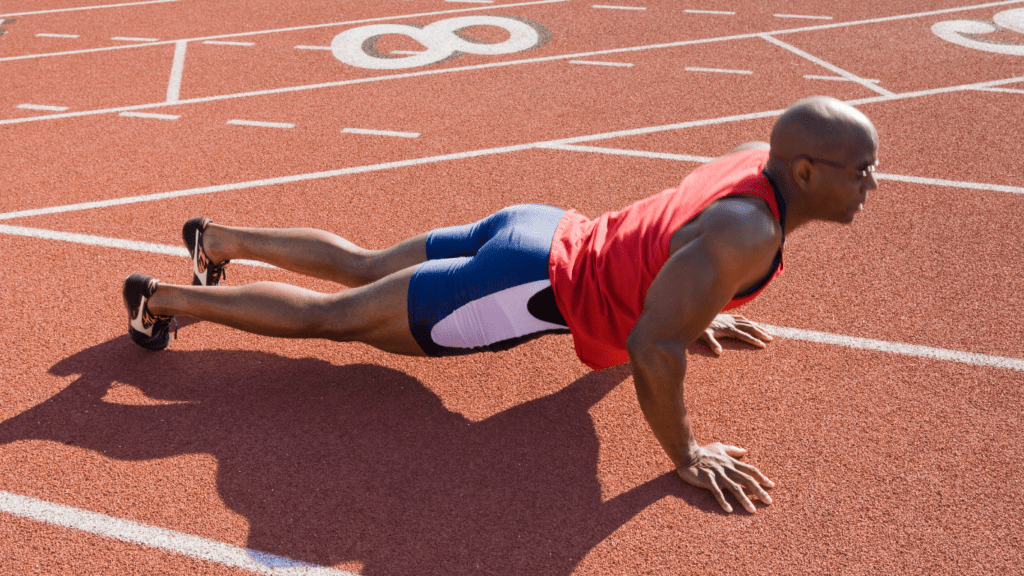Every athlete dreams of reaching their peak performance, but it’s not just about talent or hard work. Science has uncovered powerful methods that can elevate performance to the next level. From optimizing recovery to fine-tuning nutrition, there’s a wealth of research-backed strategies waiting to be tapped into.
Understanding Peak Athlete Performance
Peak athlete performance represents the highest level of physical and mental output achievable during competitive or training scenarios. This state combines physiological efficiency, psychological focus, and consistency under pressure. Studies show that top performers balance strength, endurance, agility, and mental resilience to maintain superior output.
Physical factors influence performance levels significantly. Metrics like VO2 max, muscle-to-fat ratio, flexibility, and neuromuscular coordination determine an athlete’s readiness. For example, improving oxygen utilization during endurance activities enhances sustained performance. Similarly, developing explosive power through targeted strength training benefits sports requiring bursts of energy.
Psychological aspects often define elite performance. Techniques like:
- mental imagery
- goal setting
- mindfulness
strengthen focus and reduce performance anxiety. Research from sports psychology journals confirms that athletes practicing cognitive strategies consistently achieve higher success rates in high-stakes environments.
External variables like nutrition, recovery, and environmental conditions also play pivotal roles. Nutritional plans tailored to specific training phases improve energy availability. Recovery methods, including active recovery and sleep optimization, repair tissues and prevent burnout. Personalized adaptations to external conditions, such as altitude or temperature, further fine-tune readiness.
Integrating these elements creates a system where peak performance is not only reached but sustained across competitive cycles.
The Importance Of Science In Athletics
Science drives modern athletic performance by uncovering the principles that enhance physical and mental output. Applying research-backed methods ensures athletes make informed decisions that maximize results.
How Research Shapes Training Methods
Research informs training by identifying techniques to improve outcomes efficiently. Studies on biomechanics highlight how movement patterns reduce injury risks and increase power output. For example, advanced motion analysis tools refine running form to optimize speed. Additionally, physiology research pinpoints effective ways to build endurance by manipulating heart rate zones during training.
Nutritional science shapes fueling strategies that align with performance goals. Macronutrient timing studies show how consuming carbohydrates before exercise and protein post-activity enhances energy availability and recovery. Hydration research highlights the importance of electrolyte replenishment for sustained performance in high-intensity sessions.
Psychological research offers tools to develop mental toughness. Techniques like mindfulness and stress inoculation training improve focus under pressure, ensuring athletes maintain composure during crucial moments.
Evidence-Based Practices For Success
- Evidence-based practices enable athletes to implement proven methods for peak performance. For instance, periodization strategies derived from sports science structure training into cycles, balancing overload and recovery to prevent fatigue while facilitating progress.
- High-intensity interval training (HIIT), supported by cardiovascular studies, builds endurance while maintaining efficiency.
- Sleep optimization, shown in recovery research, enhances performance by supporting muscle repair and cognitive function. For example, athletes prioritizing 7–9 hours of sleep exhibit improved reaction times and decision-making skills.
- Recovery modalities like cold-water immersion, backed by sports medicine, alleviate muscle soreness and accelerate readiness for future sessions.
- Utilizing wearable technology provides real-time feedback on metrics like heart rate variability and VO2 max, aligning training plans with physiological responses. These informed adjustments maintain training effectiveness and peak readiness during competitions.
Proven Methods To Enhance Performance

Scientific advancements provide tools and techniques that support peak athletic performance. Strategies focusing on training, nutrition, recovery, and mental fortitude enable athletes to attain consistent improvements.
Optimized Training Techniques
Structured training models enhance performance by targeting specific physiological systems. Periodization splits training into cycles, alternating intensity and volume to balance workload and recovery. High-intensity interval training (HIIT) boosts VO2 max and anaerobic capacity through short bursts of intense exercise. Strength training builds lean muscle mass and improves power output, key for sports requiring explosive movements. For accuracy, I rely on data from wearable devices, which track heart rate, cadence, and exertion during workouts.
The Role Of Nutrition And Recovery
Optimal performance requires precise fueling and recuperation strategies. Carbohydrates replenish glycogen stores after high-intensity sessions, while proteins aid muscle repair. Timing nutrient intake post-workout maximizes recovery, particularly when consuming protein within 30 minutes. Hydration ensures electrolyte balance and proper thermoregulation during exertion. Recovery modalities like sleep and massage therapy reduce fatigue. Personally, I value cold-water immersion for alleviating soreness and accelerating muscle repair, which scientific studies also support.
Mental Preparation And Focus
Psychological readiness is crucial in competitive scenarios. Mental imagery allows athletes to visualize success and hone skills in their minds. Goal setting provides clear benchmarks for progress, boosting motivation. Mindfulness techniques, such as controlled breathing, improve focus and reduce anxiety under pressure. I use these methods to train mental resilience, ensuring consistent performance even in high-stakes situations.
Technological Advances In Sports Science
Innovations in sports science are transforming how athletes train, recover, and compete. Leveraging advanced tools, athletes can gain deeper insights into performance metrics and enhance their results.
Wearable Tech And Analytics
I rely on wearable devices to track performance metrics in real time. Smartwatches, fitness trackers, and GPS systems monitor variables like heart rate, VO2 max, and distance covered. Devices like WHOOP and Polar also analyze recovery through metrics like heart rate variability (HRV) and sleep quality. AI-driven analytics process this data to create personalized training programs, optimize effort distribution, and predict peak performance windows. For instance, soccer players use GPS vests to assess sprint intensity, while cyclists track power output to adjust pacing.
Cutting-Edge Equipment For Performance
State-of-the-art equipment plays a vital role in maximizing output. Aerodynamic bicycles, carbon fiber running shoes, and advanced swimwear reduce drag and improve biomechanical efficiency. Resistance and strength equipment, such as pneumatic training machines, enable precise load adjustments for muscle-specific conditioning. High-altitude simulation chambers simulate low-oxygen environments, enhancing endurance by boosting red blood cell production. I also observe how tools like motion-capture systems refine technique by identifying inefficiencies and improving movement patterns.



 Injury Prevention & Recovery Specialist
Injury Prevention & Recovery Specialist
